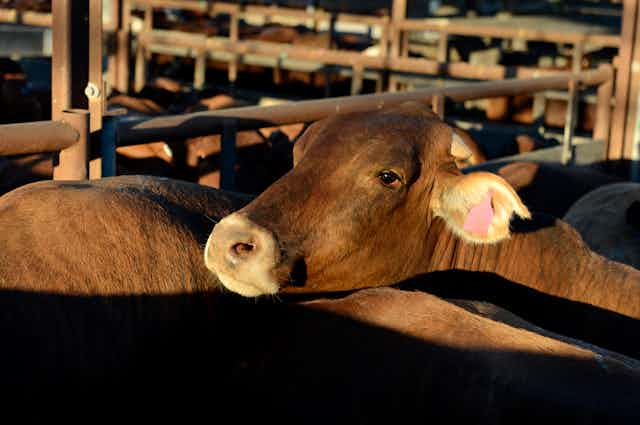When Four Corners first broke the story of cruelty to Australian cows in Indonesian abattoirs, the Australian government initiated an “acceptable Exporter Supply Chain Assurance system” to better manage live exports. That system included a complaints mechanism, which has now been active for 18 months. So how many complaints have been investigated, and what results have we seen?
The assurance system is intended to allow the department to respond to animal welfare problems associated with live animal exports. In theory, the system should mean that the government never again has to suspend the entire live export trade, as has happened in the past.
The Department of Agriculture, Fisheries and Forestry website explains that exporters, auditors and “third parties” can all report breaches under the system. Where the breach is considered to have merit it is investigated further.
The deparment’s level of transparency is to be commended. It lists all the complaints it has received and who they were made by. It also provides an overview of the nature of the complaint and the outcome of the investigation. It is rare to see a government department engaging stakeholders to this extent. On the issue of public accountability and engagement, the department scores 10 out of 10.
Looking at the complaints and investigations matrix on the department’s website, the first thing that stands out is the extent to which the department is dependent on third sector agencies and private citizens to bring matters of concerns to its attention. Of the 16 complaints lodged, 12 were lodge by animal charities, one by “a member of the public”, and one by an “external party”. Two were cases of self-reporting by exporters. Of the two cases self-reported by exporters, one was the now infamous Pakistani slaughter case that received such media attention that it is hard to image a scenario in which the incident could have gone un-reported.
In 18 months, not a single breach has been identified by the department itself. This is despite “report from auditor” being one of the three means by which the department expects to learn of breaches.
With 87.5% of complaints coming from animal groups or the community, two questions come immediately to mind. Why are animal groups eight times more likely to spot a problem with live animal exports than those people who are actively engaged in the live animal export trade? And why is the department entirely unable to identify problems itself?
Of the 16 complaints lodged with the department, six are marked as “investigation complete” and a further two are marked as “assessment completed”. Assessment completed means that the original complaint was found to be without merit and no investigation was undertaken. One of those complaints was lodged by Animals Australia. The other was by an “external party”.
Of those that have been investigated the results are mixed. The outcome of the investigations are often complex. In some cases you get the sense that probably animals suffered, but no technical breach of the system framework was identifiable. In other cases, animal suffering is confirmed, but the picture is too complex to know who is to blame. For example, in response to a complaint by Animals Australia, the department concluded that:
The investigation found that non-compliance with ESCAS requirements occurred and that this non compliance resulted in animal welfare outcomes not consistent with OIE recommendations. The investigation was unable to determine which licensed exporter exported the sheep.
So the bureaucrats have now had a good go at Australia’s live animal export trade. Is the world a better place as a result? If you value access to knowledge, the answer is probably “yes”. If you value the systematic reporting of breaches, then you have to conclude that the system would be a complete failure without Animals Australia and the RSPCA, both of which are charities and both of which depend on donations for their operations. Finally, if you like to see someone being punished when animal welfare is compromised, then ESCAS is probably not for you.

